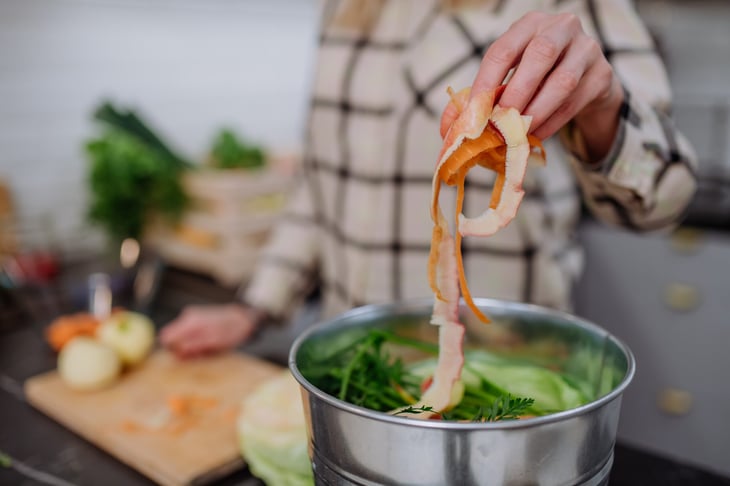
More than 30% of the food supply in the United States ends up as waste, according to the U.S. Department of Agriculture. The value of that wasted food was around $161 billion in 2010 and has surely risen since then.
Did your grocery budget just curl up and scream? Mine did. It pains me to think of the loss of all that food, not to mention the resources needed to produce it: tractor fuel, fertilizer, pesticide, packaging, gasoline for transport.
Time to think outside the box — or, rather, outside the garbage can — and get creative about food so we waste less of it.
At least some of the following ideas should work for almost everyone. You’ll offset your carbon footprint and stretch food dollars to boot.
1. Boil down leavings
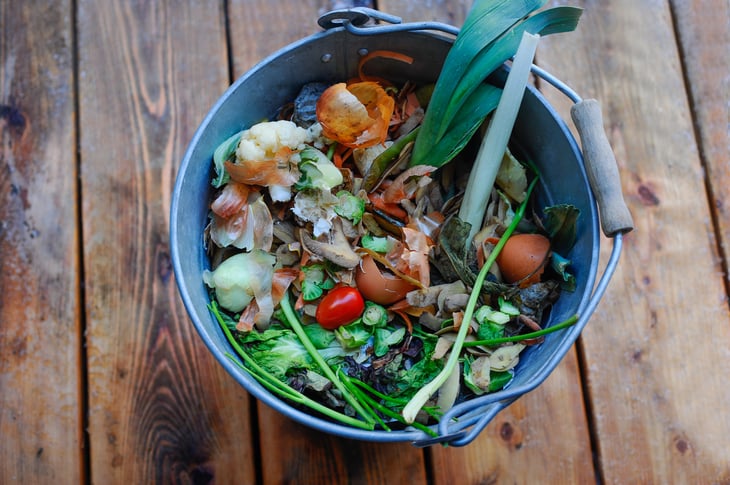
My partner and I keep a bag in the freezer for vegetable and fruit scraps — such as carrot and radish tops, pea pods, onion skins, apple cores, sweet-potato peelings — plus chicken and pork chop bones.
Next to it is a container that holds the liquid used to boil potatoes or other vegetables.
When the bag is full, we throw its contents plus the veggie cooking water and some salt into the slow cooker and leave it on low overnight. The next morning we strain the liquid and use it as a soup base.
The stock tastes different every time because what went into it varies so widely. But it always makes a great pot of soup.
2. Cook up some garbage soup
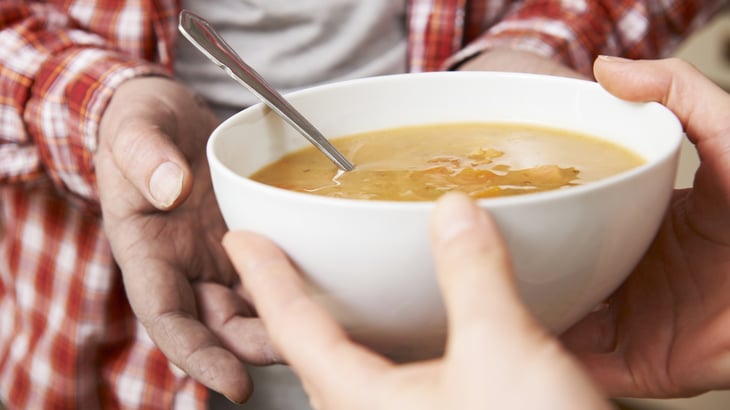
Do tonight’s leftovers consist of just a spoonful or two of mashed potatoes, a quarter-cup of gravy and a few shreds of chicken or roast beef?
Don’t send it down the garbage disposal! Instead, store it in a bag or container in the freezer. Once the bag is full, you have the makings of a fast dinner.
Put some stock — from your own boiling bag or from a can or carton — into a big pan with seasonings plus a can of tomatoes, if you like. Simmer for at least 20 minutes, then add the contents of the freezer bag.
Stir now and then as it thaws and adjust the seasoning if necessary. You can add more vegetables if you like, or rice or pasta, or maybe nothing at all — maybe your potage de garbage will taste perfect the first time.
3. Get free tops at the farmers market
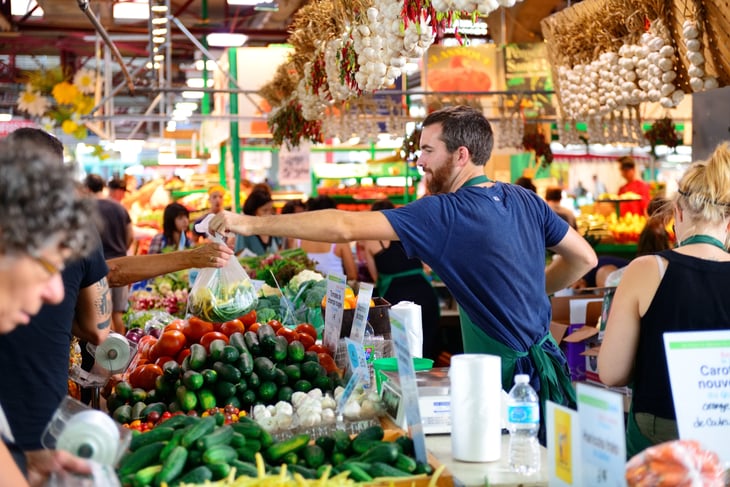
Look at all those lovely fresh turnips and beets for sale at your local farmers market. If you don’t see the tops elsewhere on the table, politely ask the farmer what happened to them. Could be they were lopped off five minutes ago.
If so, you can walk away with a nice batch of healthy, delicious greens for free. Try sauteing them in olive oil with garlic or adding them to a stir-fry. If they’re really young and tender, make them part of a salad. Freeze or dehydrate what you can’t use right away for soups or quiche later on.
Return to the market 15 minutes before closing and check to see if the vendors are packing up most of their wares but setting aside nearly overripe tomatoes, misshapen root vegetables or slightly wilted spinach. Ask politely if you can have them.
The tomatoes will make fine salsa or spaghetti sauce, the oddball veggies just need a little persistence in peeling and cutting, and the greens can go into soup (or the boiling bag).
Some of the vendors would rather give this stuff away than dispose of it. Even if they ask for some money, it could be less than you’d pay in the supermarket.
4. When dairy goes bad
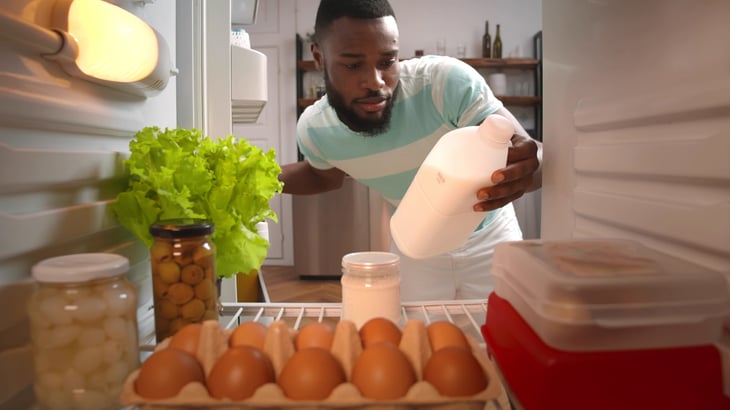
Milk a few days past its sell-by date isn’t automatically bad. And even if it is, don’t throw it out! Sour milk makes great pancakes and waffles and can also be used in cake, cookie or quick bread recipes that call for milk. Or do a search for “sour milk recipes,” and you’ll get an eyeful.
I make my own yogurt, saving a cup of each batch as starter for the next one. Every few months, those active cultures will be colonized by wild yeasts, and the yogurt starts to smell a little beer-y. Time for a new starter. Meanwhile, I use the weird yogurt in two ways:
- Smoothies. All the fruit that I add drowns out the weird yogurt flavor.
- Baked goods. I freeze any weird yogurt until I want to bake my mom’s famous Sour Cream Chocolate Cake. (Well, it was famous in our family, anyway.) Remember, back in the day, “sour cream” was cream that had gone bad rather than the cultured sour cream variety we buy now. The effect is the same though.
5. Grab leftovers after the potluck
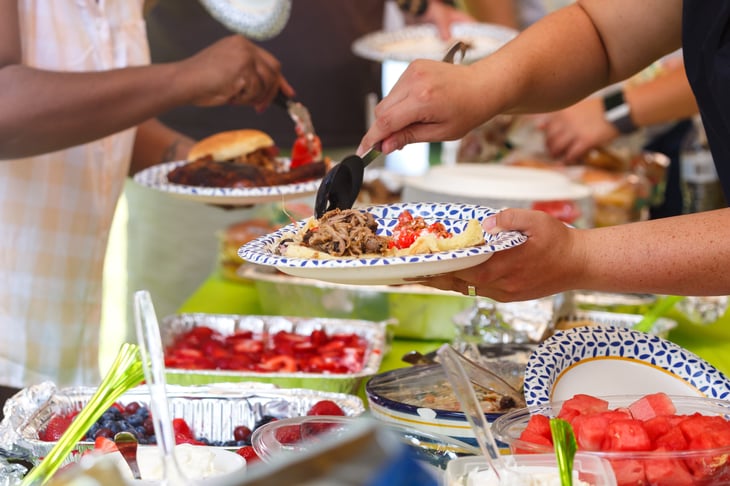
If your workplace pitch-ins are anything like the ones I used to attend, there’s always uneaten food at the end. Often the folks who brought it don’t want to take it home.
Leverage those leftovers! First, offer to help clean up. Then, state matter-of-factly that it bugs you to see food being thrown out so you plan to take some of it home.
Remember to share. If you take what’s left of the turkey, leave the ham bone. Don’t hog all the freshly cut pineapple or the best cakes and pies.
When you get home, cut any remaining meat off the turkey for a second-day dinner. Chop up odd bits for turkey salad, turkey tetrazzini, turkey a la king or any other dish that stretches small amounts of meat. Finally, boil the bones for soup stock.
Ditto with a ham bone: Dice up any remaining meat for a Western omelet or make a cream gravy and some biscuits for a hammy version of “‘stuff’ on a shingle.” The bone makes a great pot of bean soup.
Freeze leftover rolls and cookies. Load up on fruits and veggies if no one else wants them.
6. Liquid assets
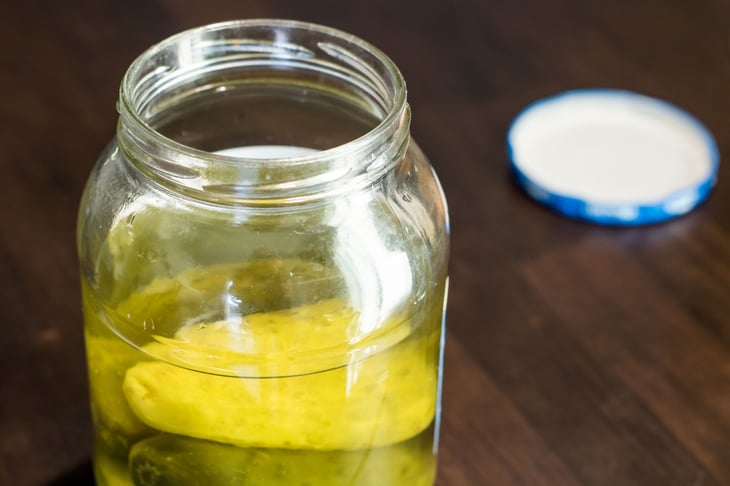
Our fridge and freezer are full of odds and ends of liquids that still have some work to do. For example, once we finish a jar of pickles, we save the brine until we have a nearly empty bottle of mustard. Shaken together, the two become a tangy condiment that’s delicious on cooked lentils or in any soup that needs a bit of zing.
The liquid from pickled jalapenos is a great marinade for sliced carrots or fresh green beans. An “empty” salsa jar or ketchup bottle gets shaken with a bit of water, then poured into the veggie cooking water mentioned in the “Boil down leavings” tip.
No doubt you can find your own ways to avoid throwing out these frugal liquid assets.
7. Look for ‘manager’s specials’

Supermarkets regularly discount meats, breads, fruits, dairy and deli items with short shelf lives. If they aren’t sold quickly, they’ll turn into garbage. But not if you get there first! You can save 50% or more by buying from the “manager’s special” sections or other clearance-food areas of your store.
Obviously, these items should be used promptly or put into the freezer. Half-price ground beef is not a bargain if it makes you sick because you neglected to cook it quickly enough.
Nearly overripe fruit is good for smoothies and quick breads; just freeze it for later use. Cook up ground beef or turkey and freeze it for quick meals later on. Milk approaching its use-by date can be frozen or used right away to make frugal puddings or homemade yogurt.
8. Make friends with the butcher

If your grocery store or meat market sells boneless chicken breasts, where did the bones and skin go? Ask if you can have them, then turn them into soup stock.
A blogger named Penny collects these chicken bits in order to render her own chicken fat for cooking. If the butcher isn’t sure that’s OK, Penny suggests asking the store manager. “Doing that afforded me an easy, ‘Sure, no problem,'” she writes.
Don’t want to do it? Try this instead: When you cook chicken or turkey, don’t skim off the fat and throw it into the garbage can. Freeze it and use it later to saute vegetables.
9. Check the Freecycle Network/Buy Nothing Facebook groups

But aren’t those groups for things like bikes and couches? Sure, but I’ve seen food products on there as well, including canned goods, frozen dinners, garden surplus, and tree fruit. If no one takes it, what do you want to bet it gets thrown into the garbage?
And as I noted in “Need Something? Buy Nothing,” we’ve gotten lots of food from our local Buy Nothing Facebook group. Some of it was unopened, but not all; for example, we scored a nearly full 50-pound bag of Costco bread flour.
Other things we’ve gotten include baking powder, dough enhancer, powdered milk, salt, dried beans, yeast, canned soup, lentils, pasta, split peas, Spam, canned vegetables, fruits, fish and an institutional-sized box of parchment paper for baking.
10. Glean from gardens and nature
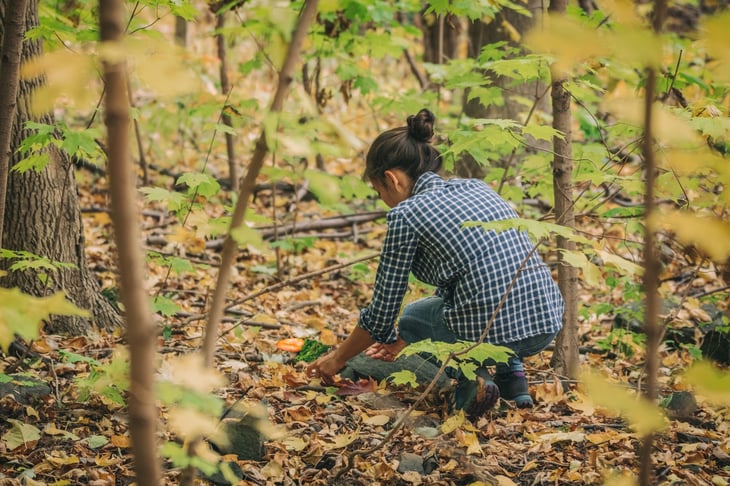
Gardeners and homeowners who find themselves with too much of a good thing usually love to give some of it away. Help them out! A handful of websites maintain databases of free produce. Read more about this in “Stop Paying for Your Food!”
Keep your eyes peeled, too. Frugality blogger and writer Erin Huffstetler regularly harvests weeds that are edible and healthy, including dandelions, red clover, purslane and cattails. She and her family also collect wild-growing pecans, chestnuts, blackberries, mulberries and black walnuts.
11. Try some dumpster diving
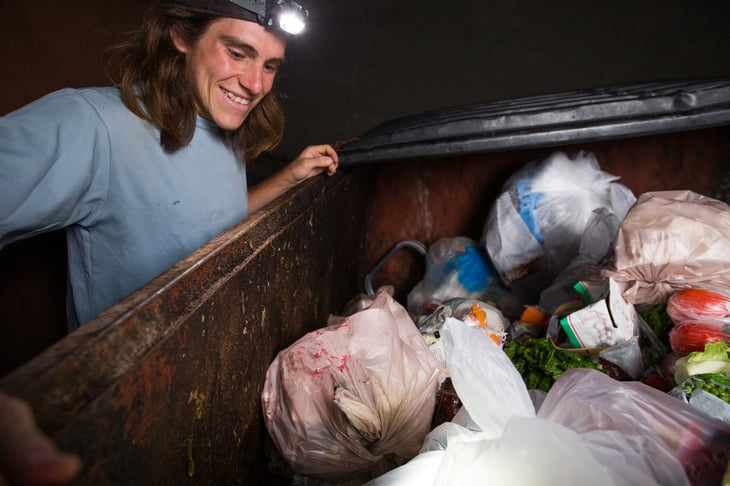
You just knew I’d bring that up, didn’t you? “Freeganism” is potentially illegal, depending on where you live and maybe even dangerous. Do it right, however, and you may wind up with food that’s perfectly safe to consume.
When I managed an apartment building in Seattle, I noticed that a departing tenant had placed a box of canned goods in the recycle bin. I pulled the box out because unopened cans can’t be recycled — and, yes, I kept them, because they were undented and nowhere close to their sell-by dates.
So while I can’t in good conscience recommend that everyone run to the nearest dumpster with a shopping bag, I suggest being alert to your surroundings.





Add a Comment
Our Policy: We welcome relevant and respectful comments in order to foster healthy and informative discussions. All other comments may be removed. Comments with links are automatically held for moderation.